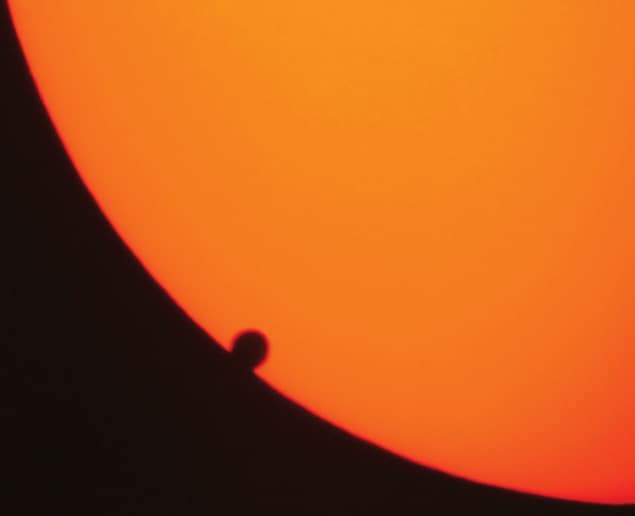Books on physics history, alien life and teaching relativity to your dog, reviewed by Margaret Harris

Pretty physics pictures
A lot of books have been written on the history of physics, but this latest one – called, simply enough, The Physics Book – stands out for two reasons. First, it is beautifully illustrated, with more than 200 full-colour images depicting objects as diverse as the Crab Nebula and the Manhattan Project’s uranium-processing facility. Second, the book is written by Clifford Pickover, an author who has been widely – and, if this book is any example, deservedly – praised for his unusual creativity. The book is arranged chronologically, so of course it begins with the Big Bang. Other early entries, though, are less conventional, such as the nuclear reactor that formed below western Africa around two billion years ago and a throwing tool called an atlatl that helped prehistoric humans hunt mammoths. This mix of the obvious and unusual continues after physics gets properly started; for example, Ben Franklin’s kite (allegedly flown in 1752) rubs metaphorical shoulders with the so-called black drop effect that occurs whenever the planet Venus passes between the Earth and the Sun. The effect was first described in 1761 by the Swedish scientist Torbern Bergman, who noted that as Venus began its transit across the Sun, the planet assumed the shape of a teardrop, with a “ligature” connecting its silhouette to the dark edge of the Sun. Observations planned for this year’s Venus transit on 6 June might explain the origins of the black drop, but we will have to wait much longer to resolve the book’s final entry, which concerns the idea of “quantum resurrection”. The gist of this mind-blowing concept is that, given infinite time, quantum fluctuations could repopulate our dying, empty universe with a range of unlikely objects – including free-floating, disembodied brains.
- 2011 Sterling £19.99/$29.95hb 528pp
Dogs in space–time
Emmy the dog loves physics. She loves physics so much that her owner, Chad Orzel, has now written two books aimed at helping her – plus a few non-canine readers – to understand her favourite subject. The first such book, How To Teach Quantum Physics To Your Dog (NB its US title leaves out the word “quantum”) covered one of the two great revolutions that hit physics in the early 20th century, so it is only natural that its sequel, How to Teach Relativity To Your Dog, focuses on the other. Like the original, which came second on Physics World’s list of the 10 best physics books of 2010 (December 2010 review), the new book mixes straightforward explanations with dialogues between Orzel and Emmy. These dialogues allow the author to clear up some misconceptions, while also giving readers a glimpse into his life as a physicist at a small US liberal-arts college – and Emmy’s life as a squirrel-obsessed cat-hater. Orzel’s background in atomic physics was a real boon in his first book, and despite the greater distance between atomic physics and relativity, it is surprisingly helpful in this one, too, especially in the early chapters on special relativity. For example, his description of the Michelson–Morley aether experiment is unusually practical for a popular-science book. Among other details, Orzel notes that the pair had to attach their interferometer to a 2 tonne granite block and float it on a vat of liquid mercury in order to reduce errors in their measurement. Later sections of the book cover space–time, particle physics and black holes, which Emmy compares to a dog gobbling up all the treats in its path (meaning that Hawking radiation is the equivalent of…no, best not think about that). The final chapters on cosmology are a bit sketchier; as Orzel himself admits, there is a reason he is an experimental atomic physicist and not a general-relativity theorist. But on the whole, this delightful book lives up to the expectations set by its predecessor.
- 2012 Basic Books £11.99/$16.99pb 368pp
Life as we do not know it
According to the science writer Marc Kaufman, astrobiologists are “part Carl Sagan, part Indiana Jones, part Watson and Crick [and] part CSI: Mars“. It is an apt description. As Kaufman makes clear in his book First Contact: Scientific Breakthroughs in the Hunt for Life Beyond Earth, the practitioners of this hot new field come from a variety of academic backgrounds, and draw on planetary science, astronomy, biology, geology and more in their quest to understand what conditions could support alien life, and what form that life might take. One question that interests astrobiologists is the same one that puzzled Schrödinger back in the 1940s: just what is life, anyway? Amazingly, there is still little consensus on the answer. One problem, Kaufman explains, is that nearly all definitions run into problems when faced with marginal substances such as desert varnish. This blackish rock coating is found in many places on Earth, and may have been spotted on Mars, but no-one has been able to determine whether its origins are microbiological or geochemical. Kaufman visited many different locations while researching the book, and he excels at describing them. For example, in a South African platinum mine, where biologists have found some unusual microbial life, water spraying into a tunnel is “bathwater hot”, while the extreme heat of the air causes Kaufman to hallucinate “halos of light far broader than anything coming from my miners’ lights”. The book does have some flaws but it is nevertheless a useful introduction to an intriguing subject.
- 2011 Simon & Schuster £16.63/$26.00hb 224pp



